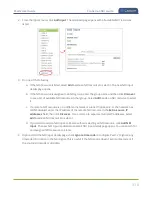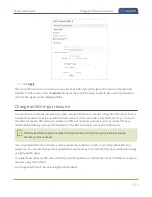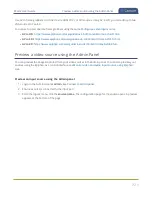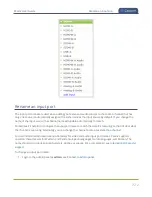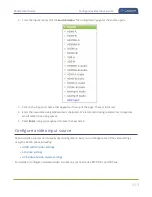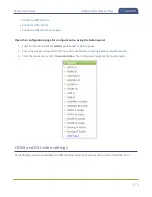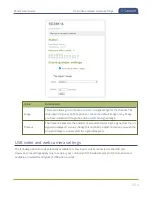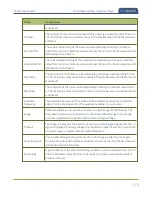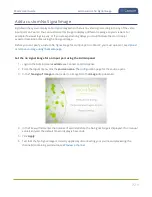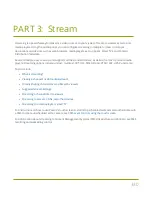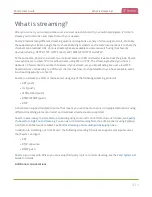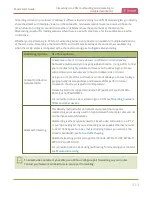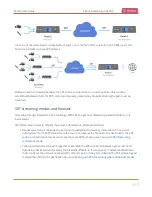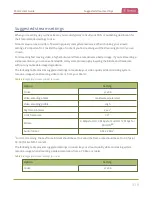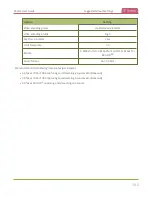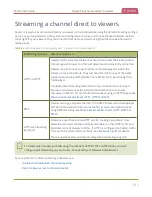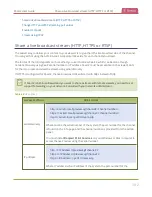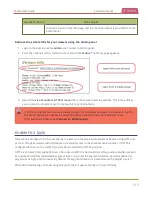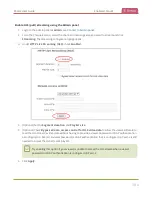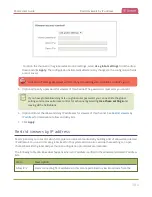
Pearl-2 User Guide
What is streaming?
What is streaming?
After you connect your camera, audio source, and set up a channel with your switched program, it’s time to
stream your content live and share that with your viewers.
Pearl-2 provides many different streaming options and supports a variety of streaming protocols. Probably
the easiest way to stream a single Pearl-2 channel directly to viewers on the same local network is to share the
channel's live broadcast URL. Various stream types are available so users can watch using their favorite
devices, including: HTTP/HTTPS, HTTP FLASH (.FLV), MPEG-TS (HTTP), and RTSP.
At the same time, Pearl-2 can stream to a multicast server or CDN and reach viewers across the globe. Pearl-2
can even stream to smart TVs in overflow rooms using SAP or UPnP. The streaming method you choose
depends on factors like the number of viewers of your stream, are you broadcasting live over a local TCP-
based network or streaming to a CDN over the Internet, how much bandwidth do you have available, and is
live streaming security a concern?
Pearl-2 can stream to a CDN or media server using any of the following streaming protocols:
l
SRT (push)
l
HLS (push)
l
MPEG-DASH (push)
l
RTMP/RTMPS (push)
l
RTSP
A channel can support multiple streams. That means you can stream a channel to multiple destinations using
different streaming protocols. Unicast and multicast streams are also supported.
Pearl-2 makes it easy to start and stop streaming using One touch control from the touch screen, see
channels for Single Touch streaming
. You can also control streaming from the Admin panel or using Epiphan
Live from a mobile device or tablet, see
Control streaming and recording using Epiphan Live
In addition to streaming out from Pearl-2, the following streaming formats are supported as input sources
that Pearl-2 can ingest:
l
SRT
l
RTSP announce
l
RTMP push
Pearl-2 also comes with APIs so you can setup third party tools to control streaming, see the
Additional considerations
331


